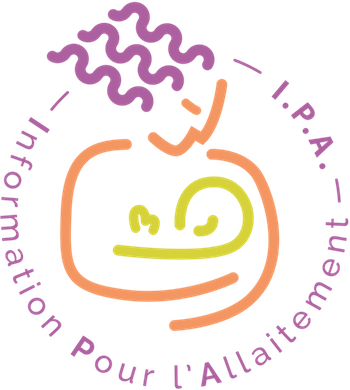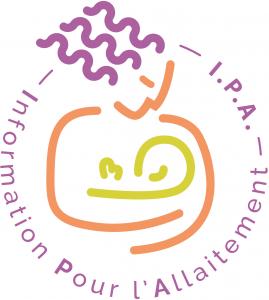Catégories
Documents disponibles dans cette catégorie (35)
 Ajouter le résultat dans votre panier Faire une suggestion Affiner la recherche
Ajouter le résultat dans votre panier Faire une suggestion Affiner la rechercheArticle : texte imprimé
Article : texte imprimé
"Les prématurés ont un risque plus élevé d’altérations des structures et de la connectivité cérébrales, visibles à l’IRM au niveau de la substance blanche, de la substance grise centrale et du cortex, avec un impact neurocognitif à long terme. L[...]Article : texte imprimé
Key Messages Commercial food packaging and devices are promoted on the global market for complementary feeding. There is little empirical evidence on the effects of complementary feeding devices and respective marketing on infant and young c[...]Article : texte imprimé
Signe Bruun, Auteur ; Suzanne Buhl, Auteur ; Steffen Husby, Auteur ; Lotte Neergaard Jacobson, Auteur ; Kim F. Michaelsen, Auteur ; Jan Sorensen, Auteur ; Gitte Zachariassen, Auteur |Background: Studies on prevalence and effects of breastfeeding call for reliable and precise data collection to optimize infant nutrition, growth, and health. Data on breastfeeding and infant nutrition are at risk of, for example, recall bias or[...]Article : texte imprimé
Background: Human milk is understood to be the optimal nutrition for infants, yet many women struggle to nurse. Although exclusively pumping human milk can provide a solution, women may be unaware of this possibility and, thus, experience unnec[...]Article : texte imprimé
Article : texte imprimé
Article : texte imprimé
Stefanie I Rosin, Auteur ; IBCLC, International Board Certified Lactation Consultant, Auteur ; PhD, Auteur |Introduction: This case of a mother and her two children, born 20 years apart, highlights how Biological Nurturing (BN) supported a woman in meeting her personal breastfeeding goals. We know lack of breastfeeding support contributes to early we[...]Article : texte imprimé
Nouf M. AlKusayer, Auteur ; William K. Midodzi, Auteur ; Leigh Anne Newhook, Auteur |Background: The original 17-item Iowa Infant Feeding Attitude Scale (IIFAS) has been validated and widely used to assess attitudes toward breastfeeding. A reduced 13-item version of the IIFAS was recently validated in a Canadian setting. Howeve[...]Article : texte imprimé
Article : texte imprimé
Article : texte imprimé
Article : texte imprimé
Aunchalee E.L. Palmquist, Auteur ; L. Doshmangir, Auteur ; RJ McCloskey, Auteur ; S. Karandikar, Auteur |Article : texte imprimé
Reena Oza-Franck, Auteur ; Jennifer J. Moreland, Auteur ; Kelly McNamara, Auteur |Background: Detailed data on lactation practices by gestational diabetes mellitus (GDM) history are lacking, precluding potential explanations and targets for interventions to improve lactation intensity and duration and, ultimately, long-term [...]Article : texte imprimé
Sarah A. Keim, Auteur ; Katie Smith, Auteur ; Taniqua Ingol, Auteur |Background: Increasing the proportion of infants who are breastfed and extending breastfeeding duration are high-priority U.S. goals. Evaluation of progress is based on federal survey data, but federal survey questions do not reflect contemporar[...]Article : texte imprimé
Article : texte imprimé
Sahra A. Kahin, Auteur ; Meghan McGurk, Auteur ; Heidi Hansen-Smith, Auteur |Background: Breastfeeding is the optimal method for infant feeding. In the United States, 81.1% of mothers initiate breastfeeding; however, only 44.4% and 22.3% of mothers are exclusively breastfeeding at 3 and 6 months, respectively. Resear[...]Article : texte imprimé
Carine Issa, Auteur ; Maria Hobeika, Auteur ; Rouba Karen Zeidam, Auteur |This study aims to investigate the positive association between a longer duration of breastfeeding and better health outcomes from birth to 36 months by using direct health outcomes and indirect health indicators. It is a cross-sectional study i[...]Article : texte imprimé
Malnutrition continues to be a major public health problem in developing countries, and young childrenArticle : texte imprimé
Background Human milk is recommended as the only nutritional source during the first 6 months of life. For preterm infants, the benefits of human milk are even more important and can alleviate the negative influences of preterm birth. Resear[...]Article : texte imprimé
Article : texte imprimé
Article : texte imprimé
Article : texte imprimé
The past decade or so has seen a growing awareness among those involved in supporting breastfeeding that emergencies place infants and young children at particular risk. Increasingly, experts in infant feeding in nonemergency contexts have sough[...]Article : texte imprimé
Atul Singhal, Auteur |Beyond just meeting nutritional requirements, nutrition during infancy is linked to disease later in life, a concept known as “the developmental origins of health and disease.” As early as the 1930s, study in rodents demonstrated that early calo[...]Article : texte imprimé
Objective: The ketogenic diet (KD) is a high-fat and restricted carbohydrate diet for treating severe childhood epilepsy. In infants, breast milk is usually fully replaced by a ketogenic formula. At our center, mothers are encouraged to include [...]Article : texte imprimé
Andini Yulina Pramono, Auteur ; Jane Desborough, Auteur ; Julie Smith, Auteur |In 2018, the World Health Organization (WHO) issued the first revision of the 1989 WHO/UNICEF Ten Steps to Successful Breastfeeding. While there is evidence of the effectiveness of those Ten Steps in increasing breastfeeding rates, there has bee[...]Article : texte imprimé
Background: A woman’s prior breastfeeding history may influence future decisions regarding infant feeding. Few quantitative tools utilizing this information have been demonstrated to predict breastfeeding success. Research aim: To evaluate [...]Article : texte imprimé
Nadine Yehya, Auteur ; Hani Tamim, Auteur ; Lama Shamsedine, Auteur |Background: The Infant Feeding Intentions (IFI) scale was shown to reliably measure maternal intentions to initiate breastfeeding and continue exclusive breastfeeding until 1, 3, or 6 months in English and Spanish but not in Arab contexts. R[...]Article : texte imprimé
Melanie Wange Larsson, Auteur ; Anni Larnkjær, Auteur ; Sophie Hilario Christensen, Auteur |We present two cases of infants having very high weight gain during exclusive breastfeeding followed by a decrease in weight-for-age z-scores (WAZ) during complementary feeding. To explore potential factors that might have influenced their very [...]Article : texte imprimé
Emily Zimmerman, Auteur ; Rachel F Rodgers, Auteur ; Jennifer O'Flynn, Auteur ; PhD, Auteur |Background: Human milk is considered the gold standard for infant nutrition, but more data are needed that examine the constellation of weight-related concerns as barriers to exclusive breastfeeding. Research aims: The aim of this study was[...]Article : texte imprimé
Julie P. Smith, Auteur ; Alessandro Iellamo, Auteur |During emergencies and disasters infant survival can depend on their access to breastfeeding or human milk. Wet nursing and donor human milk sharing are options endorsed by the World Health Assembly (WHA). This study looks at regulatory environm[...]Article : texte imprimé
Charles W. Sauer, Auteur ; Mallory A. Boutin, Auteur ; Jae H. Kim, Auteur |Background: Very-low-birth-weight infants continue to face significant difficulties with postnatal growth. Human milk is the optimal form of nutrition for infants but may exhibit variation in nutrient content. Objective: This study aimed to[...]




























